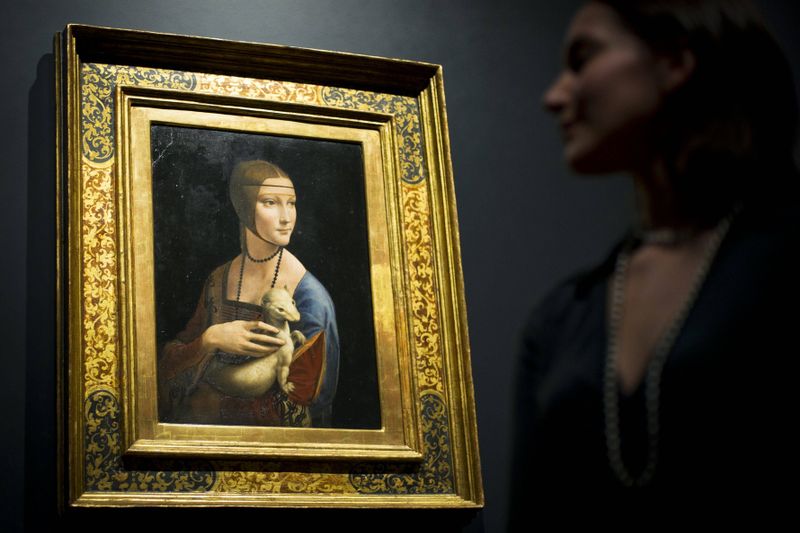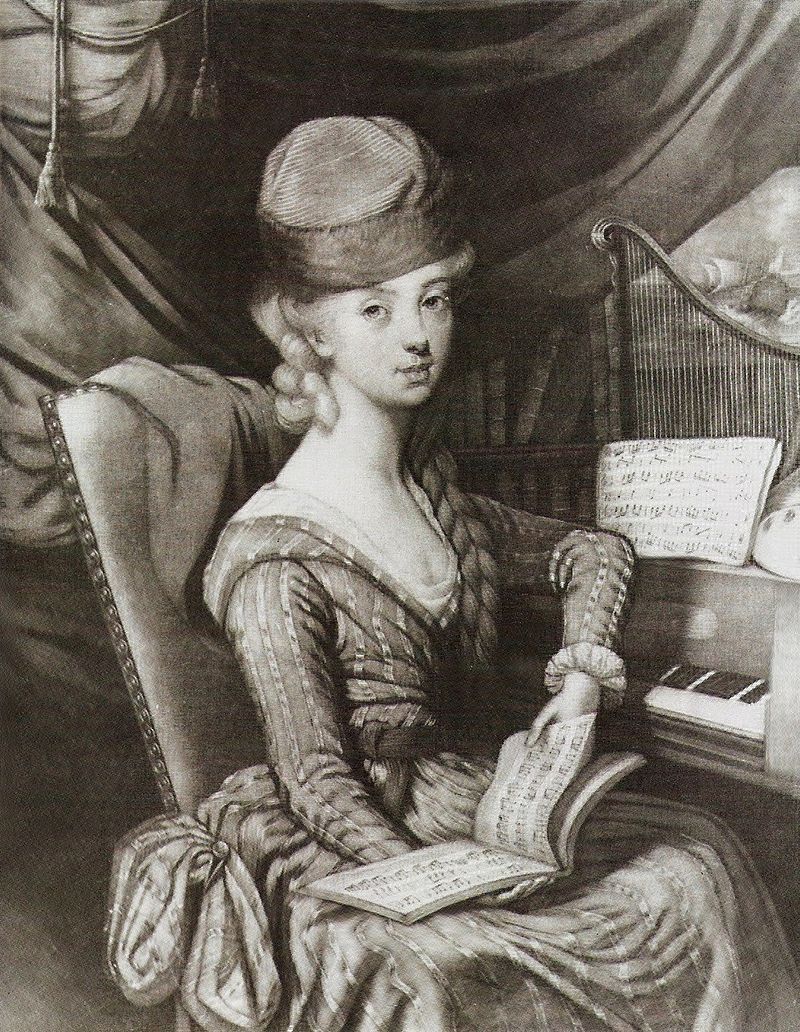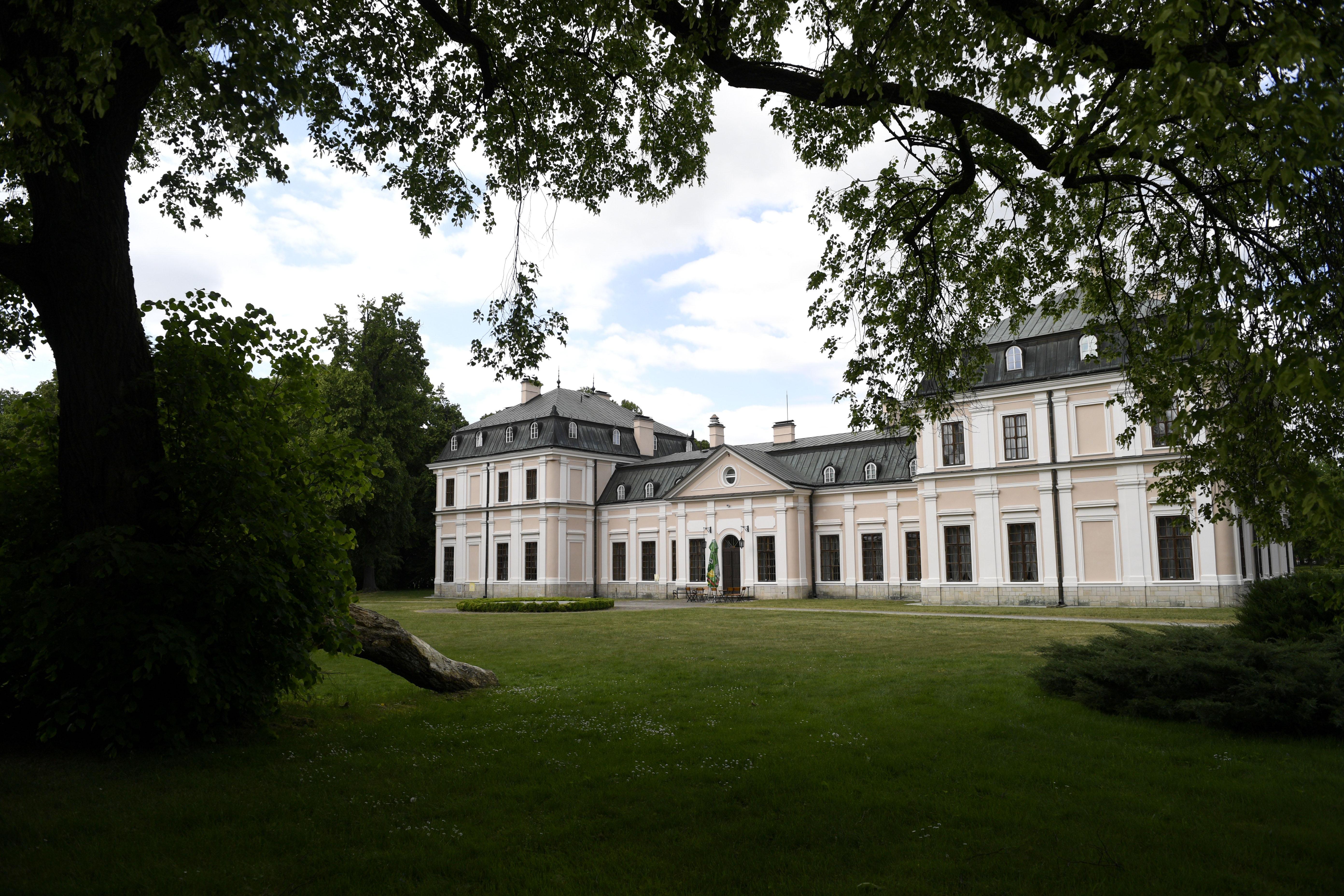News:
New books reveals incredible story of how da Vinci portrait was gifted to a Polish Princess and hidden from the Nazis by a palace housekeeper
By Stuart Dowell

What author Eden Collinsworth discovered was a 530-year journey full of mystery and intrigue that was so remarkable that she decided to tell the story in a book published later this month.
When an American writer stumbled across Leonardo Da Vinci’s masterpiece Lady with an Ermine while visiting Kraków a few years ago she was so surprised one of the world’s most renowned and valuable paintings was in the city that she had to find out how it arrived there.
What she discovered was a 530-year journey full of mystery and intrigue that was so remarkable that she decided to tell the story in a book published later this month.
What the Ermine Saw: The Extraordinary Journey of Leonardo da Vinci’s Most Mysterious Portrait by Eden Collinsworth reveals the incredible history behind one of Poland’s most beloved national treasures and a painting that many rank as better that even Da Vinci’s best-know work the Mona Lisa.
Collinsworth, an admired fiction and non-fiction writer with an extensive career in the publishing business, discovered the painting while visiting the Czartoryski Museum in the north of Kraków’s Old Town on a break during a work trip in 2019.
“With a free afternoon, I decided to spend it in the art museum. Without any specific plan, I just wandered from room to room.
“Until I came across a slightly darkened room, which was quite foreboding. What was even more foreboding was that there was only one small painting in the room flanked by two no-nonsense looking security guards
“Astonishingly, it was a Da Vinci – Lady with an Ermine. I was aware of the painting, but I had no idea that it was in Poland.”
Paintings by Da Vinci are typically on display in the most prestigious galleries in the world such as the Louvre in Paris, Uffizi Gallery in Florence and the Vatican.
Others, like Salvator Mundi, the most expensive painting ever sold at auction, are locked away in secret locations only to be enjoyed by their owners, the world’s mega rich.
While for Poles it is as obvious as night follows day that there is a Da Vinci in Kraków..png)
The first owner was the subject of the painting herself, a young Milanese lady named Cecilia Gallerani, the 16-year-old mistress of Duke Ludovico Sforza, a prominent figure in his day.
Collinsworth, though, was baffled how one of only 20 paintings by Leonardo that have survived to this day ended up in the city’s Princes Czartoryski Museum, a highly prestigious gallery in this part of Europe but far away from the major league.
With Coronavirus lockdown looming at home in London, Collinsworth checked out as many books about the painting as she could from the library and spent much of the forced isolation unravelling the painting’s journey.
“Not much research was required […] for me to realise that the portrait’s 530-year journey was so remarkable, it cheated fiction,” she said.
What struck her was that the 21-by-15-inch panel painting has not only existed through so much history but survived.
In the book, she writes: “It has managed to make its way across borders, while nations and governments have risen and fallen, while fortunes have been built and squandered, while wars have been won and lost, while begrudging political collaborations have been agreed to and often ignored, while plagues have ravished, while secrets have been hidden and betrayals have been revealed.”
While billed as an artwork biography, the book is much more a series of biographies of the people whose lives became entangled with the painting’s fate.
Collinsworth recalls the people who have owned it, protected it, stolen it and rescued it. A long list of heroes and villains that include princesses, Nazis and post-war communists.
The first owner was the subject of the painting herself, a young Milanese lady named Cecilia Gallerani, the 16-year-old mistress of Duke Ludovico Sforza, a prominent figure in his day.
Gallerani was a very well-educated woman, moved among the intellectual elite of Milan, held philosophical debates, was fluent in Latin and ancient Greek, wrote poetry and was considered one of the greatest Italian poets of the period.
When Leonardo painted her, she was pregnant with Ludovico Sforza’s child. What he created, according to the author, was more than simply an accurate representation of the teenager..png)
In about 1800 the painting was purchased by Prince Adam Jerzy Czartoryski, probably in Italy, for his mother Izabela Czartoryska, née Flemming.  Izabela was setting up the first Polish museum in Puławy as a way of preserving the memory of Poland’s statehood after the country was partitioned by Prussia, Austria and Russia.
Izabela was setting up the first Polish museum in Puławy as a way of preserving the memory of Poland’s statehood after the country was partitioned by Prussia, Austria and Russia.
She writes that Da Vinci “made Cecilia so palpably real with paint that we are able to imagine the faint pulse at the base of her throat and can almost hear her breath, but what he achieved is more than artistic precision. The portrait is not just a visual transmission of what she looked like; it’s also a psychological narrative.”
Sforza was already promised in marriage to someone else, so he could not keep the painting for himself. It is believed that the ermine held by young Cecilia is a reference to Sforza, who was a Knight of the Order of the Ermine.
When Ludovico married a 15-year-old named Beatrice, the painting hung in his private apartments while Cecilia and her son resided in the same building.
The panel was probably in Gallerani's possession until her death in 1536. What happened to it over the next two hundred and fifty years is a mystery.
One theory put forward in the book is that it was part of the collection of the Austrian emperor Rudolph.
After the Poles failed to regain their country in the 1830 uprising against the Russian Empire, the painting was taken by Izabela’s son, Adam Jerzy, to the Czartoryski palace in Sieniawa and hidden in a wall for 8 years to protect it from being stolen.
All that is certain is that in about 1800 the painting was purchased by Prince Adam Jerzy Czartoryski, probably in Italy, for his mother Izabela Czartoryska, née Flemming, who at that time was setting up the first Polish museum in Puławy as a way of preserving the memory of Poland’s statehood after the country was partitioned by Prussia, Austria and Russia.
In this section of the book, Collinsworth delves deep into Izabela’s romantic life, counting as many as seven affairs. The web of liaisons is so convoluted that she uses a flow chart to keep track of them all.
From that point, the author carefully sketches the painting’s meandering route throughout Europe.
After the Poles failed to regain their country in the 1830 uprising against the Russian Empire, the painting was taken by Izabela’s son, Adam Jerzy, to the Czartoryski palace in Sieniawa and hidden in a wall for 8 years to protect it from being stolen.
In 1840, it was transported to the Paris Hôtel Lambert, the residence of the Czartoryski family in exile.
It wasn’t until 1876 when Lady with an Ermine went on display again. This time in Kraków, in the Austrian partition, at a new museum opened by the Czartoryski family.
It travelled again during the First World War, when it was housed in the Gemäldegalerie in Dresden, returning to Kraków in 1920.
The German invasion of Poland in 1939 saw perhaps the greatest threat to the painting’s safety, when it became an object of desire for competing senior Nazi art thieves.
Here, Collinsworth looks into the biographies of the chief perpetrators of the rape of Poland’s art, Hans Posse, Kajetan Mulhmann and Hans Frank chief among them.
Just before the invasion, it was taken again to Sieniawa, where it was hidden along with Raphael’s Portrait of a Young Man and Rembrandt’s Landscape with the Good Samaritan, a trio of Poland’s most valuable paintings which together are known informally as the Holy Trinity.
In Sieniawa, they were deposited and walled up in the basement of the outbuilding.
Fear of a German invasion drove everyone away from Sieniawa. Only the housekeeper Zofia Szmit, unaware of the paintings, stayed at the palace.
On 18 September, thanks to a tip-off from a local Volksdeutsche man, the Germans discovered and ransacked the hiding place.
Amazingly, they left the painting behind not being aware of its value.
It was then that legend says a German boot print on the face of the painting was made.
On 22 September Augustyn Czartoryski transported the paintings and the remaining silver to Pełkinie. However, the Germans finally tracked the painting down.
For a short while it was exhibited at the Kaiser-Friedrich-Museum in Berlin with the intention that it should eventually find its home in Hitler’s planned private museum in Linz.
However, unexpectedly, it returned to Kraków. Not to the Czartoryski museum, but, on the orders of Governor General Hans Frank, to his office in Wawel Castle..png)
Collinsworth, an admired fiction and non-fiction writer with an extensive career in the publishing business, discovered the painting while visiting the Czartoryski Museum in the north of Kraków’s Old Town on a break during a work trip in 2019.
It stayed there throughout the German occupation and looked down on Frank when he signed orders for the extermination of millions of Jews and Poles.
The Lady left Wawel as the Soviets approached the city. It went first to the palace of a friend of Frank’s in Siechau (now Sichów) in Lower Silesia, and then to Frank’s summer villa in Neuhaus in Upper Bavaria.
When Frank was arrested there, the painting was taken to a Munich warehouse and then later transported to Kraków in Communist Poland.
In 1991, Polish courts recognised Adam Karol Czartoryski as the sole heir to the family collection and in 2016 the painting along with the whole Czartoryski family collection was sold to the Polish government for a reported $105million in 2016, a knock-down price said to be only five percent of its estimated value.
Sitting now behind protective glass, Lady with an Ermine is enjoying what is hopefully a long, unbroken rest after her adventures and waiting for the world to visit her in what for some at least is an unlikely location.
What the Ermine Saw: The Extraordinary Journey of Leonardo da Vinci’s Most Mysterious Portrait by Eden Collinsworth will be published by Penguin Random House on May 24.


